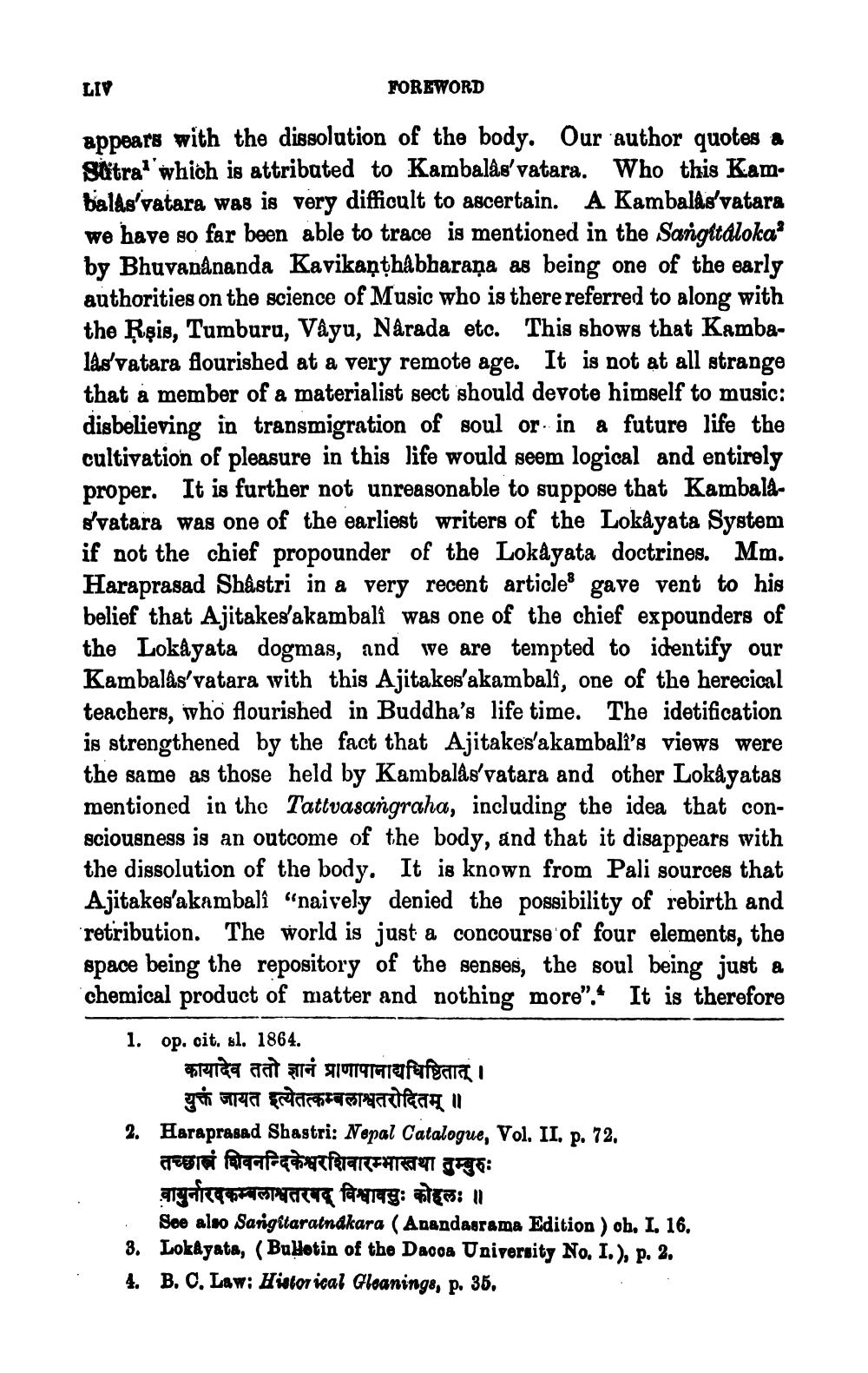________________
LIV
FOREWORD
appears with the dissolution of the body. Our author quotes a Stra* which is attributed to Kambalds'vatara. Who this Kam. bialas'vatara was is very difficult to ascertain. A Kambalas'vatara we have so far been able to trace is mentioned in the Sangitaloka by Bhuvanananda Kavikanthabharaña as being one of the early authorities on the science of Music who is there referred to along with the Rşis, Tumburu, Väyu, Nárada etc. This shows that Kambalas'vatara flourished at a very remote age. It is not at all strange that a member of a materialist sect should devote himself to music: disbelieving in transmigration of soul or in a future life the cultivation of pleasure in this life would seem logical and entirely proper. It is further not unreasonable to suppose that Kambalas'vatara was one of the earliest writers of the Lokayata System if not the chief propounder of the Lokayata doctrines. Mm. Haraprasad Shastri in a very recent article gave vent to his belief that Ajitakes'akambali was one of the chief expounders of the Lokayata dogmas, and we are tempted to identify our Kambalâs'vatara with this Ajitakes'akambali, one of the herecical teachers, who flourished in Buddha's life time. The idetification is strengthened by the fact that Ajitakes'akambali's views were the same as those held by Kambalds'vatara and other Lokayatas mentioned in the Tattvasangraha, including the idea that consciousness is an outcome of the body, and that it disappears with the dissolution of the body. It is known from Pali sources that Ajitakes'akambali “naively denied the possibility of rebirth and retribution. The world is just a concourse of four elements, the space being the repository of the senses, the soul being just a chemical product of matter and nothing more”.4 It is therefore 1. op. cit. sl. 1864.
कायादेव ततो ज्ञानं प्राणापानाधिष्ठितात् ।
युक्तं जायत इत्येतत्कम्बलाश्वतरोदितम् ॥ 2. Haraprasad Shastri: Nepal Catalogue, Vol. II. p. 72.
तच्छान शिवनन्दिकेश्वरशिवारम्भास्तथा तुम्बुरुः वायुर्नारदकम्बलाश्वतरषद् विश्वावसुः कोहलः ॥
See also Sangitaratnákara ( Anandasrama Edition ) oh. I. 16. 3. Lok&yata, (Bulletin of the Dacoa University No. I.), p. 2. 4. B, C, Law: Historical Gloanings, p. 36.




